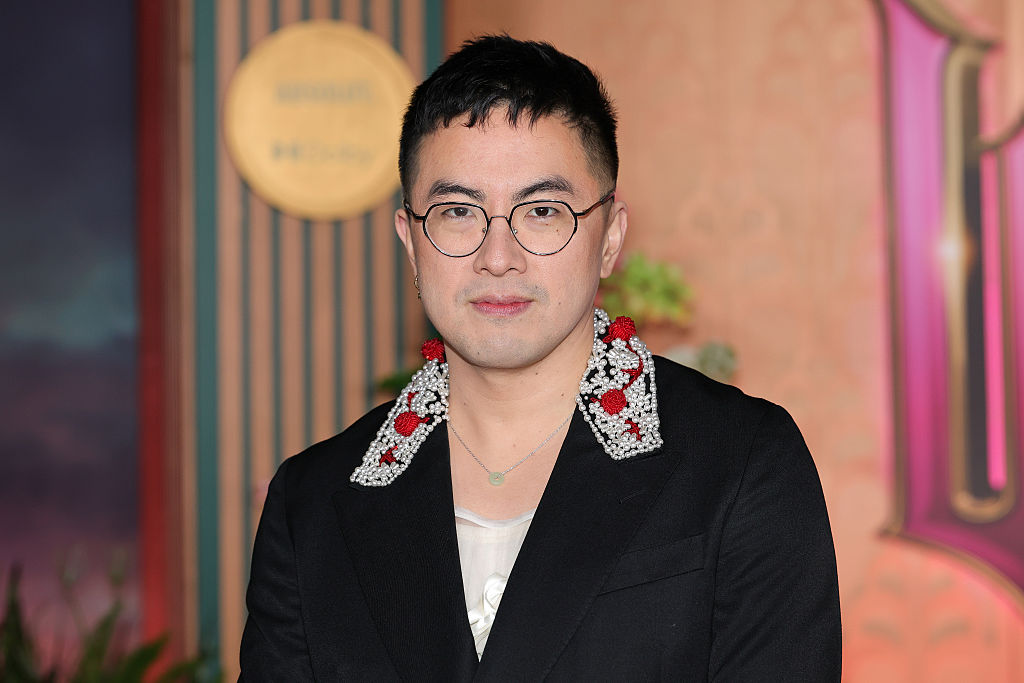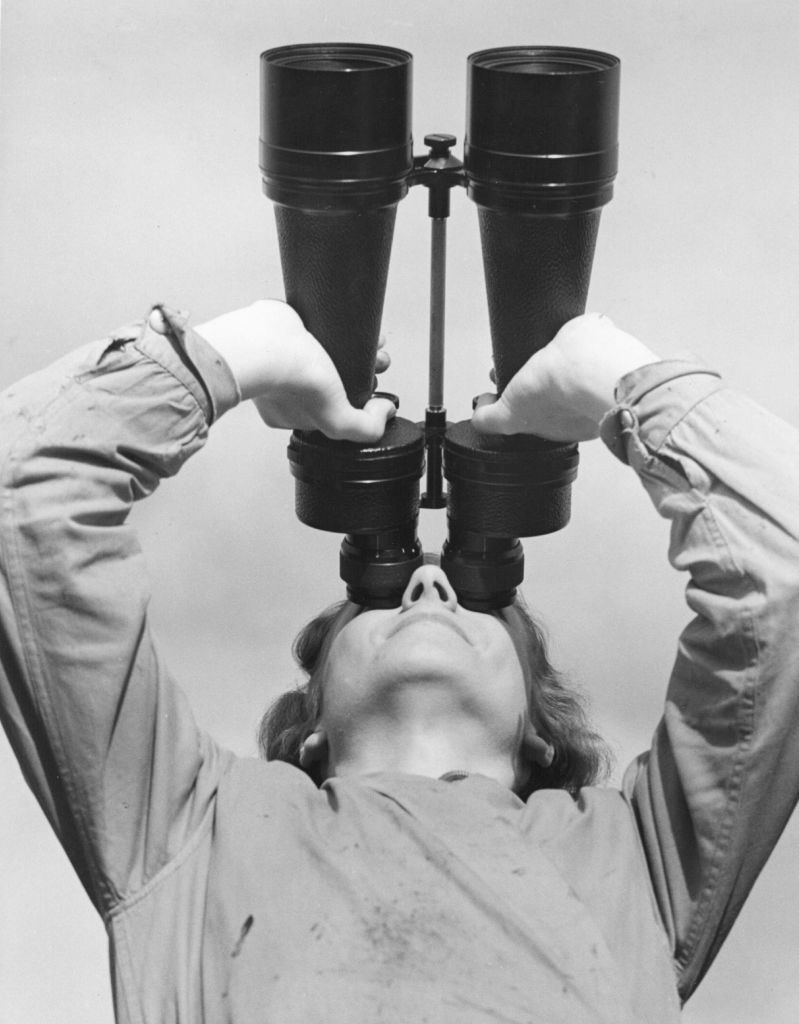Meet The Queer Couple That (Literally) Defies Gravity

Contortion, hand balancing, and aerial skills are combined in their exquisite new show at Theater for the New City: Conjunction.
Some couples meet on Tinder. This couple met in the Circus. Medea Exogiinos (it/its) and Maia Ramnath (xe) have been together for four years and now are the ringleaders of their own show. The married genderqueer couple defy gravity and genre with an artform that doesn’t fit neatly into the categories of nightlife, burlesque, or circus – yet combines them all. Contortion, hand balancing, and aerial skills are combined in their exquisite new show at Theater for the New City: Conjunction.
Their circus solo synthesis mirrors the story of their connection, and their reflections on the quest to find a place in the world. In Part 1, Maia explores the space that exists between classification and category. Xe does not fit neatly into boxes, as per a questionnaire projected by video at the beginning of the show. Race? Gender? Occupation? How about “ninja pirate archivist space ranger”? Just one of many suitable answers for this North Dakota native, who as a child, found comfort in the trees.
“I had a lot of energy – mental energy, physical energy, and needed somewhere to put it, says Maia, who has been creating multi-disciplinary aerial-dance-theater-video assemblages since 2009. “I always had the impulse to climb on stuff and get up high… running around outside, climbing trees. I started dance classes quite young… then later on in [grad] school, I still felt like I was happiest and most mentally grounded if I always had some kind of vigorous physical activity.”
Both Medea and Maia came up through serious dance pursuits. [It] “can be very traumatic and psychologically scarring…leaving you with a lot of baggage and a lot of sensitivities,” Maia says of the professional dance world. Later on, finding a way to move that simply felt fun and joyful was everything to xe. And the aerial work taken up late in life has now become a big part of xe’s professional and artistic life (and was also a release from work on a PhD dissertation on anti-colonialism and transnational radical social movements).
Medea mastered power tumbling and trampoline before falling in love with dance, pursuing ballet with the Joffrey Ballet in Chicago, The Ailey School, and the second company of Martha Graham. “I like to spin really fast,” says the aficionado of the hoop, a favored apparatus given its similarity to trapeze. “You can hang by your feet, by your knees, and do acrobatic movements around it and over it, in and out of it.”
While many acrobats and aerialists in New York earn a living by working nightclubs, cabarets and burlesque with a smidge of raunch, Medea employs these artforms, along with dance and theater, but ultimately occupies a category that doesn’t fit into, well…a box.
But boxes abound in Conjunction. The performers are at times subjugated by them and at other times, lording over them. Maia perches from a crate, as if to survey a distant future, maybe a glimpse of a future ancestor. Xe’s solo work – highlighted in the first act – is informed by a “bigger history” that includes intellectual ancestors, artistic and inspirational ideological, influential ancestors. “And then as queer people too, we talk a lot about chosen family and a different kind of ancestry that’s not based on blood kinship.”
Maia’s sheer strength is impressive (don’t deny yourself the pleasure of checking out xe’s forearms). But so is the artist’s elegance of form in dance, and on the aerial rope, with an inviting performance choreographed to Nordic Raga that blends southern Indian and Swedish folk music – reflecting xe’s own Indian and Scandinavian heritage. A movement of arms with a nod to the god of dance, Shiva Nataraja, is particularly lovely on the stage.
But most striking: the aura of grounding, a strength of spirit, that serves as a counterpoint to Medea’s magnetic and explosive kaleidoscope of energy.
Medea is playful and impish in first encounters with Maia during Conjunction – including teasing xe by stepping on ropes attached to burdensome crates that Maia tugs across the stage*, as if to ask: will we ever be free of society’s constraints? As in real life, getting to know each other is a bit of a dance, with some push and pull. Medea’s hand reaches out to touch Maia’s stomach. Maia contracts. The moment is so tingly that this observer might not be sure if the harp she heard came from the stage or her own head.
In Part 2, Medea takes to the low lyra (aerial hoop) and scaffold, in an escalation of spinning that reflects the artist’s struggles with mental health, much of which originated around the trauma of professional dance culture.
At first, all looks cheery. But the audience soon realizes that the wild girl that everyone wants at the party is actually quite lost. Medea’s energy gets progressively more ragged, moving from abstractions around intrusive thoughts, to a lusty scene performed to the Belgian band Lords of Acid that is both impossible to look away from, and hard to watch. Because one thing is clear: a dangerous recklessness is fueling Medea’s sense of invincibility and hyper-sexuality. The dancer is out of control. Detonating.
And future wife Maia is ever-present on the sidelines, imploring Medea to hold on.
Medea is very open about life’s struggles, sharing “for those who have been there”. The mental health advocate has fused life-experience into the show, drawing on former experience as a stripper, and regular in the city’s “nightlife” circuit. A unique community of artists. “Some of the strongest people I know,” Medea says. “People trying to do things with their body that are pushing the ultimate… really flexible, really strong. A lot of determination.”
The colorful essence of one being meets something close to mystical in the other, in the third act where the two stories merge. “But even before that, we start to appear and become more and more present within the other,” Medea says. It is a merging of two travelers – aliens if you will – who have found each other, and join together after appearing in each other’s individual stories before they came to think of themselves as a “we”.
The show is the culmination of an artistic process that began a few years back when the two started discussing teaming up, sharing resources, and combining visions of their existential quests into an integrated work. They are thrilled to bring the production to Theater for the New City – one of few hold-outs for non-commercial art, as Medea puts it. “An artistic space with a lot of integrity, which is still there, even after waves of gentrification… holding down the fort as a place for local artists to come”.
Recovery from depression is the final stroke of Conjunction. The two come together in a mesmerizing rope performance, weaving in and out, above and below each other. The choreography is an abstract representation of support and “the people who stay there for you,” Medea offers.
Maia will always be most comfortable aloft, drawn to the allure of the highest branches. Medea has found spiritual refuge in the sea. It is a space that requires looking into murkiness, to remain calm amid so much that is beyond one’s control. Therein lies the hope and salvation.
Ultimately, Conjunction celebrates the space where transformation can occur. The exchange of energy throughout the show varies from subtle to powerful. Both performers have found their mooring – with each other, and independent of each other. But moments of pure touch are few. Which is why it’s glorious and satisfying when these life partners finally stand face to face, hand to hand with images of their journeys surrounding them – witnesses to their own stories.
Note: Portions of the show will be reprised on March 8th and 9th at the NYC Aerial Dance Festival.












